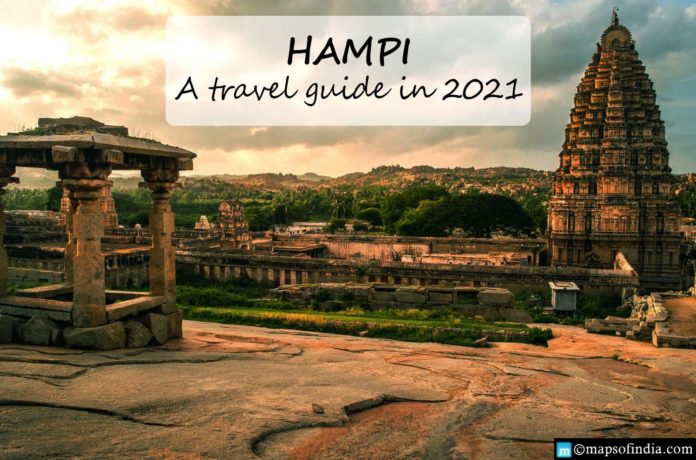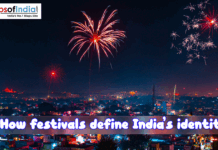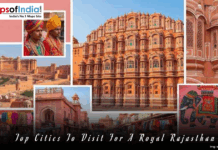Hampi is known for the ruins of the former medieval Hindu kingdom of Vijaynagar. It has been designated as a UNESCO World Heritage site. The temples of Hampi and its monolithic statues and monuments draw visitors due to their superb craftsmanship. The Hindu architectural style seen in Hampi depicts the glory of the Vijaynagar Empire. The mountainous environment contributes to the historic aura of this location.
It is located in the central region of Karnataka. It is 353 kilometres away from Bangalore and 13 kilometres from Hospet. It is 467 meters above sea level and situated on a steep landscape. The Tungabhadra River traverses Hampi.
The earliest settlement in Hampi dates from the first century AD, and various Buddhist sites from that era have been discovered nearby. The great Vijaynagar Empire had its capital in Hampi. Vijaynagar was among India’s most significant Hindu dynasties, created in 1336 by two brothers, Harihar and Bukka. Krishnadevaraya (1509-1529) was the most powerful emperor, controlling nearly all peninsular India downstream of the Tungabhadra River.
In the 14th century, Hampi had a population of half a million. The city was fortified with seven concentric lines of defence, and it had a large force to defend itself against neighbouring kingdoms. The Vijaynagar Empire thrived because it dominated southern India’s cotton and spice shipping routes. According to medieval historians, Hampi was a significant trading hub. However, Vijaynagar’s glory was temporary. In 1565, the united forces of the five Muslim kingdoms, namely Bidar, Bijapur, Golconda, Ahmednagar, and Berar, destroyed this formidable empire with the execution of Krishnadevaraya.
The popular tourist attractions in Hampi may be split into two categories: the Hampi Bazaar area and the Royal centre near Kamalapuram. The Virupaksha Temple, built in the 15th century, is situated in Hampi Bazaar, and it is one of the town’s ancient monuments. The temple’s primary shrine is devoted to Virupaksha, a manifestation of Lord Shiva, and rises roughly 50 meters above the ground.
Hemakuta Hill, located south of the Virupaksha temple, is home to old monuments, Jain temples, and a monolithic statue of Lord Narasimha, who has the appearance of Lord Vishnu. The view from Hemakuta Hill of Hampi Bazaar is spectacular. The World Heritage Vittal temple, established in the 16th century, is two kilometres east of Hampi Bazaar. The sculptures on this temple reveal the architectural magnificence of the artisans of the Vijaynagar Empire. When the temple’s exterior pillars are touched, they generate music, sometimes referred to as musical pillars.
The abandoned Sule Bazaar and the Achutraya temple may be seen between Hampi Bazaar and Vittal temple. Other attractions in the Hampi Bazaar region include the Monolithic monument of Lord Ganesh, Nandi, the Kodandarama temple, and the Krishna temple.
The royal centre is situated between the Hampi Bazaar and Kamalapuram districts.
The Hampi Bazaar is a 2-kilometre trek down to this region. Within the royal centre’s walled area, there are various tourist sites. The Lotus Mahal, also known as the Zenana Enclosure, is an artistically built pavilion within a walled courtyard. The lotus blossom sculpted on the domed and vaulted ceiling gives this palace its name. It is a combination of Indo-Islamic architecture.
The Elephant Cage is next to the Zenana Enclosure, and it is a domed structure that once housed the royal elephants. The Queen’s Bath, with its distinctive Islamic style, and the Underground Virupaksha temple are two more must-see attractions in the royal centre. The Archeological Museum at Kamalapuram contains a significant collection of Vijaynagar Empire sculptures.
Anegondi, in addition to the Hampi Bazaar and the Royal Center, is a popular tourist destination. It is a protected region across the Tungabhadra River north of Hampi Bazaar. There are several temples within and surrounding it.





